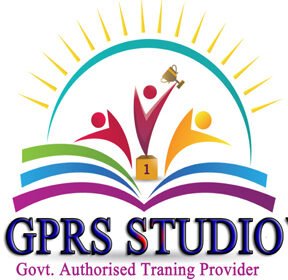Storyboard artist ( 6 month course)
Storyboard artist click here
Brief Job Description: Individuals at this job need to translate the script/ story/
idea/ concept into a visual medium using a series of illustrated frames.
Personal Attributes: This job requires the individual to have excellent drawing
skills and an understanding of the elements of storyboarding. The individual must
be able to visualize frames/ scenes and conceptualize creative ways to illustrate
them using software such as Adobe Photoshop Storyboard Pro, Storyboard Artist
Studio, Microsoft Power point etc.

Description
Attitude poses Attitude poses are used to describe the body language and personality of
the characters
Budget Budget is an estimate of the total cost of production that may include a
break-up of cost components
Character line-up Character line-up is the portrayal of characters side-by-side
Character turnarounds Character turnarounds are used to depict the characters look from all
angles
Clean-up Refining the interim/rough animation
Color keys Color keys are used to depict the mood of the production through hues
and tones
color theory Color theory is the art of combining all the colors in the color wheel to
create specific color combinations
Core Skills/Generic
Skills
Core Skills or Generic Skills are a group of skills that are key to learning
and working in today’s world. These skills are typically needed in any
work environment. In the context of the OS, these include
communication related skills that are applicable to most job roles.
Creative Brief Creative brief is a document that captures the key questions that serve as
a guide for the production including the vision, objective of the project,
target audience, timelines, budgets, milestones, stakeholders etc.
Description Description gives a short summary of the unit content. This would be
helpful to anyone searching on a database to verify that this is the
appropriate OS they are looking for.
Function Function is an activity necessary for achieving the key purpose of the
sector, occupation, or area of work, which can be carried out by a person
or a group of persons. Functions are identified through functional
analysis and form the basis of OS.
Job role Job role defines a unique set of functions that together form a unique
employment opportunity in an organization.
Knowledge and Understanding
Knowledge and Understanding are statements which together specify the
technical, generic, professional and organizational specific knowledge that
an individual needs in order to perform to the required standard.
Lighting keys Lighting keys are used to depict the mood of the production through
intensity, tine and shadows
Mouth chart Mouth chart is used to portray the emotions and expressions of the
characters
National Occupational
Standards (NOS)
NOS are Occupational Standards which apply uniquely in the Indian
context.
Occupation Occupation is a set of job roles, which perform similar/related set of
functions in an industry
Occupational Standards
(OS)
OS specify the standards of performance an individual must achieve
when carrying out a function in the workplace, together with the
knowledge and understanding they need to meet that standard
consistently. Occupational Standards are applicable both in the Indian
and global contexts.
Keywords /Terms Description
NOS National Occupational Standard(s)
QP Qualifications Pack
NSQF National Skill Qualifications Framework
NVEQF National Vocational Education Qualifications Framework
NVQF National Vocational Qualifications Framework
Understanding the script
Description This OS unit is about interpreting the script/ brief/ storyboard/ concept for the
animation and design process
Scope This unit/task covers the following:
Interpret the script/ brief/ storyboard/concept correctly
Liaise with the team to improve understanding
Performance Criteria (PC) w.r.t. the Scope
Element Performance Criteria
Interpret the script/ brief/ storyboard correctly
To be competent, the user/individual on the job must be able to:
KA1. understand the artistic and communication goals of the script, brief or
storyboard with respect to the individual’s role

KA2. be aware of the intended medium and target audience, and how this may
affect animation processes
KA3. understand the aspects related to the design brief (appearance, complexion,
dressing, moods, personalities, expressions etc.)
KA4. understand the requirements according to the scripts (number, types,
duplicates etc.) based on the individual’s role and its requirements
KA5. understand the specifications for the background and other aspects
(dimensions, operating parameters etc.) based on the individual’s role and its
requirements
KA6. understand the technical needs of the project with respect to the job role
(Television, Film, Gaming, Internet, DVD etc.)
KA7. understand the of the concept, which may be self-created, provided in a brief,
or arrived at via discussions with relevant personnel (Director, Executive
Producer etc.
Liaise with the team to improve understanding
KA8. Liaise with relevant personnel (Art Director, Producers, Animation Supervisor
etc.) to better understand script elements, as appropriate
Knowledge and Understanding (K)
A. Organizational Context (Knowledge of the company / organization and its processes)
The user/individual on the job needs to know and understand:
KA1. the creative vision and elements of production relating to the job role
KA2. the project pipeline/schedule and timelines with respect to the individual’s role
KA3. the intended purpose/ end-use of the models/ designs that need to be created
by the individual
B. Technical Knowledge
The user/individual on the job needs to know and understand:
KB1. principles of animation
KB2. how to assess the script and its artistic and communication goals
KB3. how to extract and interpret relevant information regarding the script’s vision
KB4. how to discuss and understand relevant information regarding the concept’s
vision from relevant personnel (art director, producers, animation supervisor
etc)

KB5. how to research and tap into the sources for procuring information/
background material that will enhance understanding of the concept
KB6. applicable copyright norms and intellectual property rights
KB7. applicable health and safety guidelines
Skills (S) (Optional)
A. Core Skills/
Generic Skills
Writing Skills
The user/individual on the job needs to know and understand how to:
SA1. document notes while understanding the brief, requirements and
specifications to refer to during the production process
Reading Skills
The user/individual on the job needs to know and understand how to:
SA2. read and understand the script/ brief/ storyboard
SA3. research links, videos, artwork etc. that can be used as references
Oral Communication (Listening and Speaking skills)
The user/individual on the job needs to know and understand how to:
SA4. understand the central idea and the concept of the script
B. Professional Skills Plan and Organize
The user/individual on the job needs to know and understand how to:
SB1. analyse the tasks required and estimate the time required for each task, so as
to manage the allotted work and achieve it in given schedules
Problem Solving
The user/individual on the job needs to know and understand how to:
SB2. critically analyze the various elements of the script and the work that may be
required in relevance with the individual’s role
Decision making
The user/individual on the job needs to know and understand how to:
NA
Customer Centricity
The user/individual on the job needs to know and understand how to:
NA
Critical Thinking
The user/individual on the job needs to know and understand how to:
NA
Analytical Thinking
The user/individual on the job needs to know and understand how to:
NA
Prepare storyboard
Description This OS unit is about translating the script/ story/ idea/ concept (largely written
material/ text) into a visual medium using a storyboard/series of illustrated frames
Scope This unit/task covers the following:
Breaking the production idea/script down into frames/ scenes. Production
could include the following:
Animation, Advertisements/commercials, Documentaries, Feature films,
Short Films, Television Series (Storyboards are most relevant for
Animation, Vfx and Advertising)
Translating the frames into a series of sequential illustrations
Performance Criteria (PC) w.r.t. the Scope
Element Performance Criteria
Breaking the
production
idea/script down into
frames/ scenes
To be competent, the user/individual on the job must under the close supervision of a
senior, be able to:
PC1. analyze and break the production idea/script down into frames/scenes/ panels
PC2. conceptualize creative ways of illustrating frames/scenes (all possible technical
aspects must be handled carefully in each panel)
Translating the frames into a series of sequential illustrations
PC3. prepare storyboards for the script in accordance to specifications, keeping in
mind the technical continuity of the story from the concept to the screenplay
PC4. respond positively to feedback and changes in creative requirements
Knowledge and Understanding (K)
A. Organizational Context (Knowledge of the company / organization and its processes)
The user/individual on the job needs to know and understand:
KA1. the objective and outcomes of the production relevant to the individual’s job
role
KA2. the objective/purpose that the storyboard intends to achieve i.e. to make
pitches (e.g. ad films) or to explain requirements/ act as a reference for the
production team (e.g. animated content, ad film production)
KA3. the storyboarding requirements and specifications
KA4. the timelines within which the storyboard needs to be delivered
KA5. how to see the story and its requirements through the directors eyes
KA6. the age-group for which the story needs to be presented
KA7. the precautions that need to be kept in mind for a particular script
B. Technical Knowledge
The user/individual on the job needs to know and understand:
KB1. the elements of storyboarding including character movements, backgrounds,
camera angles, shots, frame composition, perspective, lighting, sets etc.
KB2. how to draw and illustrate using various drawing techniques
KB3. how to illustrate words, emotions and actions in a simple and powerful way
KB4. the human anatomy, emotions, actions and expressions
KB5. basics of theatre, staging, gestures and group behavior
KB6. how to work on storyboarding software such as Adobe Photoshop Storyboard
Pro, Storyboard Artist Studio, and Microsoft PowerPoint etc.
KB7. how to present simple and appropriate camera angles to make the scene
interesting
KB8. how to use photography as a tool to gather references
KB9. how to break the script down into frames / scenes relevant to the individual’s
own work

KB10. the basics of frame resolution and ratios
KB11. how to visualize frames/ scenes from the angle of a camera and conceptualize
creative ways to illustrate them
KB12. how to research/ collect visual references
KB13. applicable health and safety guidelines
Skills (S) (Optional)
A. Core Skills/
Generic Skills
Writing Skills
The user/individual on the job needs to know and understand how to:
SA1. document notes on requirements and specifications
SA2. label each frame sequentially and document notes, where required
Reading Skills
The user/individual on the job needs to know and understand how to:
SA3. read and understand the script/ story/ concept/ idea
Oral Communication (Listening and Speaking skills)
The user/individual on the job needs to know and understand how to:
SA4. be a good story-teller
SA5. understand storyboard requirements and specifications from the Producer and
Director
SA6. present and pitch storyboards to the Producer, Director, Production team, as
appropriate
B. Professional Skills Plan and Organize
The user/individual on the job needs to know and understand how to:
SB1. plan and prioritize own work according to the requirements and agreed
timelines
Problem Solving
The user/individual on the job needs to know and understand how to:
SB2. identify any problems with successful execution of the the individual’s tasks
and resolve them in consultation supervisors
Decision making
The user/individual on the job needs to know and understand how to:
SB3. make creative decisions while creating storyboard as per the script
Analytical Thinking
The user/individual on the job needs to know and understand how to:
SB4. have a keen eye for detail and maintain an aesthetic sense towards the final
output
Critical Thinking
The user/individual on the job needs to know and understand how to:
SB5. appraise the quality of the own work to ensure it is in line with the initial
concept and quality standards
Customer Centricity
The user/individual on the job needs to know and understand how to:
SB6. check that your own work meets project requirements
Create Visual References
Description This OS unit is about translating the script/ story/ idea/ concept into visual references
Scope This unit/task covers the following:
Creating visual references based on the story/ concept, under supervision
Performance Criteria (PC) w.r.t. the Scope
Element Performance Criteria
Creating visual
references based on
the story/ content,
under supervision
To be competent, the user/individual on the job must under close supervision of a
senior, be able to:
PC1. translate initial character designs into appropriate visual references showing
all required positions, angles and views, with particular regard to continuity
and size relationships
PC2. create environmental backgrounds with appropriate perspective and lighting
that matches existing designs
PC3. produce reference material that establishes the required mood, meaning and
effect within the confines of the required style
PC4. produce accurate visual references that provide the necessary information
for use by the animation team, including explanatory notes where required
PC5. remain constantly flexible and adaptable to new directions, creative
requirements and developments in design
Knowledge and Understanding (K)
A. Organizational Context (Knowledge of the company / organization and its processes)
The user/individual on the job needs to know and understand:
KA1. the objective and outcomes of the production
KA2. the objective/purpose that the storyboard intends to achieve i.e. to make
pitches (e.g. ad films) or to explain requirements/ act as a reference for the
production team (e.g. animated content, ad film production)
KA3. the storyboarding requirements and specifications
KA4. the timelines within which the storyboard needs to be delivered
KA5. how to see the story and its requirements through the directors eyes
KA6. the age-group for which the story needs to be presented
KA7. the precautions that need to be kept in mind for a particular script
B. Technical Knowledge
The user/individual on the job needs to know and understand:
KB1. the elements of storyboarding including character movements, backgrounds,
camera angles, shots, frame composition, perspective, lighting, sets etc.
KB2. how to draw and illustrate using various drawing techniques

KB3. how to illustrate words, emotions and actions in a simple and powerful way
KB4. the human anatomy, emotions, actions and expressions
KB5. elements animation technique and the medium that are relevant to the
individual’s job role
KB6. how to work on storyboarding software such as Adobe Photoshop Storyboard
Pro, Storyboard Artist Studio, and Microsoft PowerPoint etc.
KB7. how to present simple and appropriate camera angles to make the scene
interesting
KB8. how to use photography as a tool to gather references
KB9. how to break the script down into frames / scenes
KB10. the basics of frame resolution and ratios
KB11. how to visualize frames/ scenes from the angle of a camera and conceptualize
creative ways to illustrate them
KB12. how to research/ collect visual references
KB13. applicable health and safety guidelines
Skills (S) (Optional)
A. Core Skills/
Generic Skills
Writing Skills
The user/individual on the job needs to know and understand how to:
SA1. document notes on requirements and specifications
SA2. label each frame sequentially and document notes, where required
Reading Skills
The user/individual on the job needs to know and understand how to:
SA3. read and understand the script/ story/ concept/ idea
Oral Communication (Listening and Speaking skills)
The user/individual on the job needs to know and understand how to:
SA4. be a good story-teller
SA5. understand storyboard requirements and specifications from the Producer
and Director
SA6. present and pitch storyboards to the Producer, Director, Production team and
end clients
B. Professional Skills Plan and Organize
The user/individual on the job needs to know and understand how to:
SB1. plan and prioritize own work according to the requirements and agreed
timelines
Problem Solving
The user/individual on the job needs to know and understand how to:
SB2. identify any problems with successful execution of the individual’s tasks and
resolve them in consultation with the producer and director
Decision making
The user/individual on the job needs to know and understand how to:
SB3. make creative decisions while creating visual references as per the script
Analytical Thinking
The user/individual on the job needs to know and understand how to:
SB4. have a keen eye for detail and maintain an aesthetic sense towards the final
output
Critical Thinking
The user/individual on the job needs to know and understand how to:
SB5. appraise the quality of the own work to ensure it is in line with the initial
concept and quality standards
Customer Centricity
The user/individual on the job needs to know and understand how to:
SB6. check that your own work meets project requirements
Maintain workplace health and safety
Description This OS unit is about contributing towards maintaining a healthy, safe and secure
working environment
Scope This unit/task covers the following:
Understanding the health, safety and security risks prevalent in the workplace
Knowing the people responsible for health and safety and the resources
available
Identifying and reporting risks
Complying with procedures in the event of an emergency
Performance Criteria (PC) w.r.t. the Scope
Element Performance Criteria
Understanding the
risks prevalent in the
workplace
To be competent, the user/individual on the job must be able to:
PC1. understand and comply with the organization’s current health, safety and
security policies and procedures
PC2. understand the safe working practices pertaining to own occupation
PC3. understand the government norms and policies relating to health and safety
including emergency procedures for illness, accidents, fires or others which
may involve evacuation of the premises
PC4. participate in organization health and safety knowledge sessions and drills
Knowing the people
responsible for health
and safety and the
resources available
PC5. identify the people responsible for health and safety in the workplace,
including those to contact in case of an emergency
PC6. identify security signals e.g. fire alarms and places such as staircases, fire
warden stations, first aid and medical rooms
Identifying and
reporting risks
PC7. identify aspects of your workplace that could cause potential risk to own and
others health and safety
PC8. ensure own personal health and safety, and that of others in the workplace
though precautionary measures
PC9. identify and recommend opportunities for improving health, safety, and
security to the designated person
PC10. report any hazards outside the individual’s authority to the relevant person in
line with organizational procedures and warn other people who may be
affected
Complying with
procedures in the
event of an
emergency
PC11. follow organization’s emergency procedures for accidents, fires or any other
natural calamity in case of a hazard
PC12. identify and correct risks like illness, accidents, fires or any other natural
calamity safely and within the limits of individual’s authority
Knowledge and Understanding (K)
A. Organizational
Context (Knowledge
of the company /
organization and
its processes)

The user/individual on the job needs to know and understand:
KA1. organization’s norms and policies relating to health and safety
KA2. government norms and policies regarding health and safety and related
emergency procedures
KA3. limits of authority while dealing with risks/ hazards
KA4. The importance of maintaining high standards of health and safety at a
workplace
B. Technical Knowledge
The user/individual on the job needs to know and understand:
KB1. the different types of health and safety hazards in a workplace
KB2. safe working practices for own job role
KB3. evacuation procedures and other arrangements for handling risks
KB4. names and contact numbers of people responsible for health and safety in a workplace
KB5. how to summon medical assistance and the emergency services, where necessary
KB6. vendors’ or manufacturers’ instructions for maintaining health and safety
while using equipment, systems and/or machines
Skills (S) (Optional)
A. Core Skills/
Generic Skills
Writing Skills
The user/individual on the job needs to know and understand how to:
SA1. how to write and provide feedback regarding health and safety to the
concerned people
SA2. how to write and highlight potential risks or report a hazard to the concerned
people
Reading Skills
The user/individual on the job needs to know and understand how to:
SA3. read instructions, policies, procedures and norms relating to health and
safety
Oral Communication (Listening and Speaking skills)
The user/individual on the job needs to know and understand how to:
SA4. highlight potential risks and report hazards to the designated people
SA5. listen and communicate information with all anyone concerned or affected
B. Professional Skills Decision making
The user/individual on the job needs to know and understand how to:
SB1. make decisions on a suitable course of action or plan
Plan and Organize
The user/individual on the job needs to know and understand how to:
SB2. plan and organize people and resources to deal with risks/ hazards that lie
within the scope of one’s individual authority
Problem Solving
The user/individual on the job needs to know and understand how to:
SB3. apply problem solving approaches in different situations
Critical Thinking
The user/individual on the job needs to know and understand how to:
SB4. understand hazards that fall within the scope of individual authority and
report all hazards that may supersede one’s authority
SB5. apply balanced judgments in different situations
Customer Centricity
The user/individual on the job needs to know and understand how to:
SB6. build and maintain positive and effective relationships with colleges and
customers
Analytical Thinking
The user/individual on the job needs to know and understand how to:
SB7. analyze data and activates





